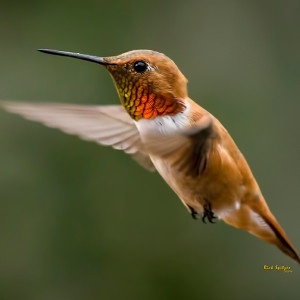
Winter is on its way out and spring is on its way in! It’s time for budding aspens, rushing rivers, bare feet, and clear highway conditions. This time of year can go by in the blink of an eye, and if you’re not careful you might miss the most spectacular change that spring has to offer, our birds! Many birds are returning from their tiring migration south to their northern breeding grounds. Whether they are locals returning home or just passing through, this article will tell you who to look for, and how to identify them so you can enjoy the great migration this spring.
One of the most remarkable migrants returning to Colorado is the Swainson’s Hawk. This bird of prey has one of the longest migrations of any American raptor, over wintering in the grasslands of Argentina before returning to breed in the sage flats of Colorado. This bird can be easy to identify as they will travel in flocks of hundreds or thousands as they enter the valley. Most commonly seen soaring above our heads, this bird can be identified by its distinctive underwing, with white wing liners and black flight feathers causing an unmistakable contrast. While in flight, you can guess this hawk has its eyes peeled for its favorite snack, the grasshopper. Swainson’s Hawks often hunt in groups following tractors that cause an uprising of the tasty insects.
Another truly amazing migrator is the Rufous Hummingbird, migrating around 2,000 miles from Mexico to as far north as Alaska. They arrive here in Colorado between early June and mid-September to take advantage of our blooming wildflowers. Like most hummingbirds, they rely on nectar and insects to provide the energy for their fast flight skills. They are identifiable by their rufous (rust-colored) and green iridescent feathers as well as their unique attitudes. For such a small bird weighing less than 4 grams, it has a huge personality and is often seen bullying or quarreling with other birds up to twice their size to keep the food source all to themselves. Even though these birds are only passing through, be sure to provide them with a warm Colorado welcome and keep those hummingbird feeders filled!
Then there are birds that love the Colorado summers. The red-naped sap sucker, a woodpecker returning from Mexico, chooses the willow and aspen stands of Colorado for their nesting. These birds stay true to their name by drilling holes in trees to cause the flow of sap that in turn attracts insects. Using a sticky tongue, the sap sucker slurps up the tasty sap insect soup. Both males and females have a bright red patch on their throat and the nape of their neck, but you’ll almost always hear them before you see them as they drum loudly on the trees around us. Be sure to keep your eyes and ears open for the return of the red-naped sap sucker this season!
Last but not least, we anxiously await the return of our warblers each year. These small song birds vary greatly in color and sound, but they bring life back to the riparian communities of Colorado. This is especially true for our flashy yellow warbler. It fills the forests with a call that seems to say “sweet, sweet, sweet, I’m so sweet!”, and if you can’t hear it you’ll be sure to see it. With neon yellow plumage, this bird can be hard to miss. You’ll often find this species in willow trees near wetlands and streams while they snack on insects.
These birds are just the beginning, so be sure grab a pair of binoculars, get outside, and see how many birds you can identify this season. Keep your eyes to the skies Colorado, and enjoy spring!
McCale Carter is a naturalist at Walking Mountains Science Center who loved the chance to learn the art of skiing here in the valley, but can’t wait for a new birding season to begin!









